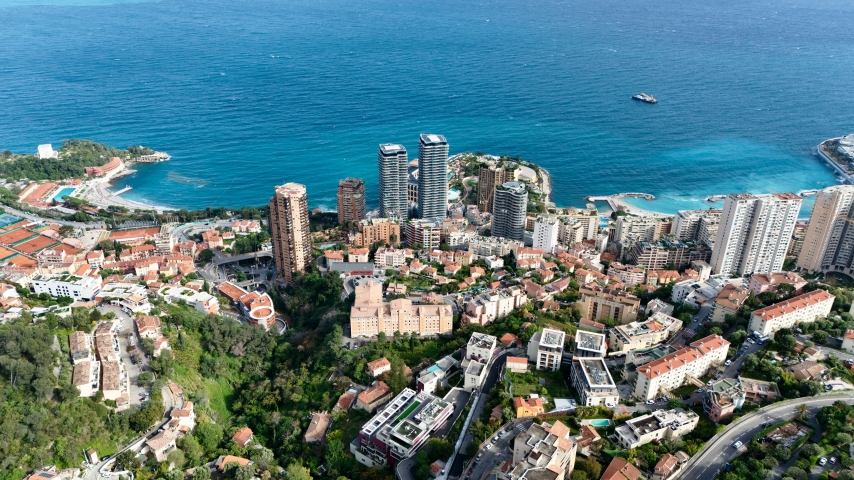
As the Côte d'Azur grapples with the chaos of overtourism, the tiny Principality of Monaco remains a surprising oasis of calm. In a region where beachgoers jostle for space and streets are jam-packed with sightseers, Monaco seems to have avoided the pitfalls of mass tourism. But is this by design, or simply a matter of scale?
Guy Antognelli, Director of Tourism and Congresses for Monaco, dismisses the idea that the Principality is experiencing anything like the overtourism seen in nearby hotspots. "Monaco is not overwhelmed by tourists," he says. "We have no streets clogged with people, and our major attractions like the Prince’s Palace and the Oceanographic Museum could easily handle far more visitors than they do."
Indeed, the Oceanographic Museum, one of Monaco’s main attractions, welcomed 650,000 visitors last year, well below the 1 million it hosted in 1992. Despite its relatively small beach, Antognelli notes that “visitors are not packed in like sardines.”
Monaco’s avoidance of overtourism stands in stark contrast to other parts of the Mediterranean, where budget travel and discount packages have lured crowds in the millions. But Antognelli attributes Monaco’s relative tranquility to its careful, long-term planning and positioning. “Monaco has never courted mass tourism. We’ve always aimed for quality over quantity,” he explains, pointing out that the Principality has resisted the trend of "cheap week-long vacations" seen in places like Marbella and the Costa Brava.
Monaco’s focus on attracting affluent travelers is a key factor. “We’ve built our reputation on ultra-luxury and we intend to stay there,” Antognelli says. This commitment to a high-end image has not only helped preserve the Principality’s exclusivity, but also spared it from the overflow of day-trippers that choke other tourist hubs.
One of the most effective tools Monaco has deployed against potential tourist overcrowding is its stringent regulation of cruise ship access. Large ships, which can offload thousands of passengers at once, are subject to strict size and capacity limits. "We only allow ships measuring 250 meters or less, and those carrying more than 1,250 passengers are banned from our port," Antognelli explains. This cap has helped prevent the kind of visitor surges that have plagued other Mediterranean destinations.
Yet, this restriction hasn’t come without controversy. Some local businesses on Monaco’s famed Rocher have voiced concerns that high-end cruise passengers aren’t spending money in their shops. Antognelli acknowledges this but counters that the ultra-wealthy are often looking for more unique, artisanal products, not the mass-market souvenirs some retailers are offering. "Perhaps it’s time to rethink the retail offerings," he suggests. “The future might lie in more refined, creative goods that appeal to the kind of clientele we attract."
Despite its success in managing peak-season tourism, Monaco’s quieter winter months remain an untapped opportunity. "It’s a shame that winter here is so calm," Antognelli laments. "We have just as much to offer then." To that end, the Principality is promoting business tourism and off-season gastronomic experiences. With seven Michelin-starred restaurants, Monaco is marketing itself as a culinary destination for those seeking a refined experience outside the traditional tourist season.
As cities across the globe struggle with the pressures of overtourism, Monaco’s approach offers a lesson in balancing luxury with sustainability. By managing its visitor numbers, cultivating an exclusive image, and carefully regulating high-impact tourism sources like cruise ships, Monaco is charting a path that keeps the crowds at bay—without losing its appeal.
Monaco's strategy may indeed serve as a model for other cities facing the challenges of overtourism. While destinations like Venice and Barcelona have struggled with the environmental and social impacts of mass tourism, Monaco has chosen a path of careful curation, focusing on quality over quantity.
Monaco’s relationship with tourism goes back over a century. Unlike newer tourist hotspots, the Principality has long integrated tourism into its identity. “Monaco was built on tourism from the very beginning,” Antognelli says. “Our residents understand its importance. They’ve lived with tourists for generations, so there’s less tension between locals and visitors than in places where tourism is a newer phenomenon.”
This long-standing coexistence has fostered a more tolerant and pragmatic approach among Monaco’s population. The country’s economic structure is intertwined with tourism, with many locals working in industries directly or indirectly linked to the sector. Yet, because Monaco draws visitors from the upper echelons of wealth, the strain on local infrastructure is far less intense than in cities catering to budget travelers.
Still, Monaco’s exclusive positioning comes with challenges of its own. By targeting a more affluent crowd, the Principality must constantly reinvent itself to stay competitive in the global luxury market. Major renovations are underway at iconic hotels like the Hôtel de Paris and the Métropole, which aim to elevate their offerings to even higher standards. “We’re moving toward larger rooms and more suites,” says Antognelli, underscoring the shift toward ultra-luxury.
But can Monaco sustain this level of exclusivity while also avoiding the social and environmental pitfalls that accompany tourism at any scale? Antognelli is optimistic: “Our goal is not to expand at any cost, but to maintain and refine what we already have.”
As global trends shift towards more sustainable, experience-driven travel, Monaco’s carefully managed tourism strategy could become even more relevant. While many cities are grappling with how to balance the economic benefits of tourism with the need to preserve local culture and the environment, Monaco’s proactive measures—like limiting cruise ship traffic and encouraging high-end tourism—may prove to be ahead of their time.
The challenge for Monaco will be to continue evolving without losing the charm and exclusivity that have defined it for so long. With its focus on attracting discerning travelers rather than large crowds, the Principality may offer a vision of how luxury tourism and sustainability can coexist in an increasingly crowded world.
For now, Monaco’s streets remain walkable, its museums uncrowded, and its beaches tranquil—offering a rare respite from the overtourism that plagues much of the Mediterranean.
